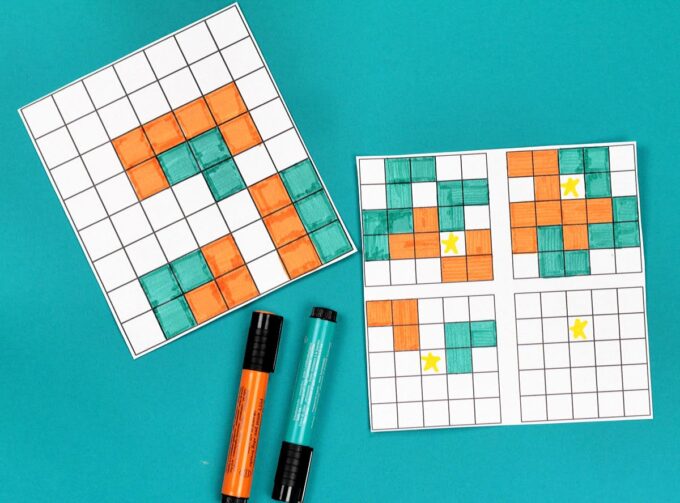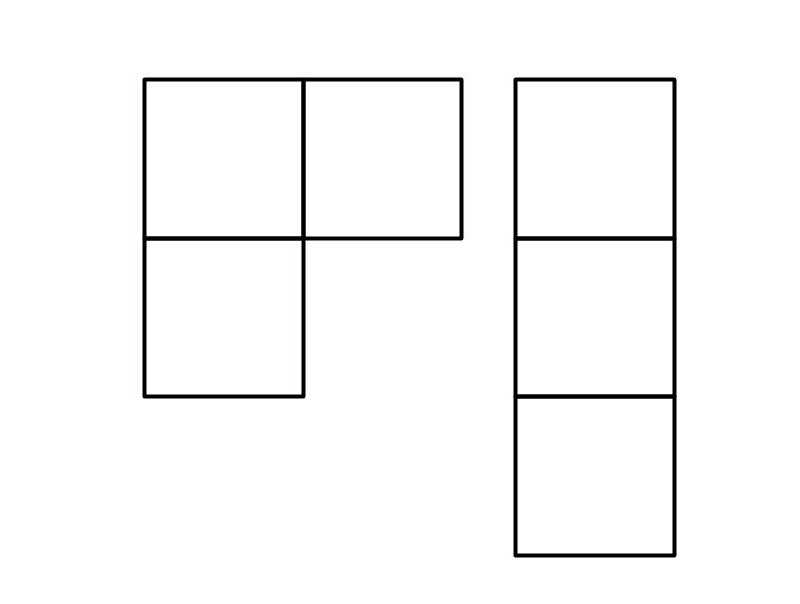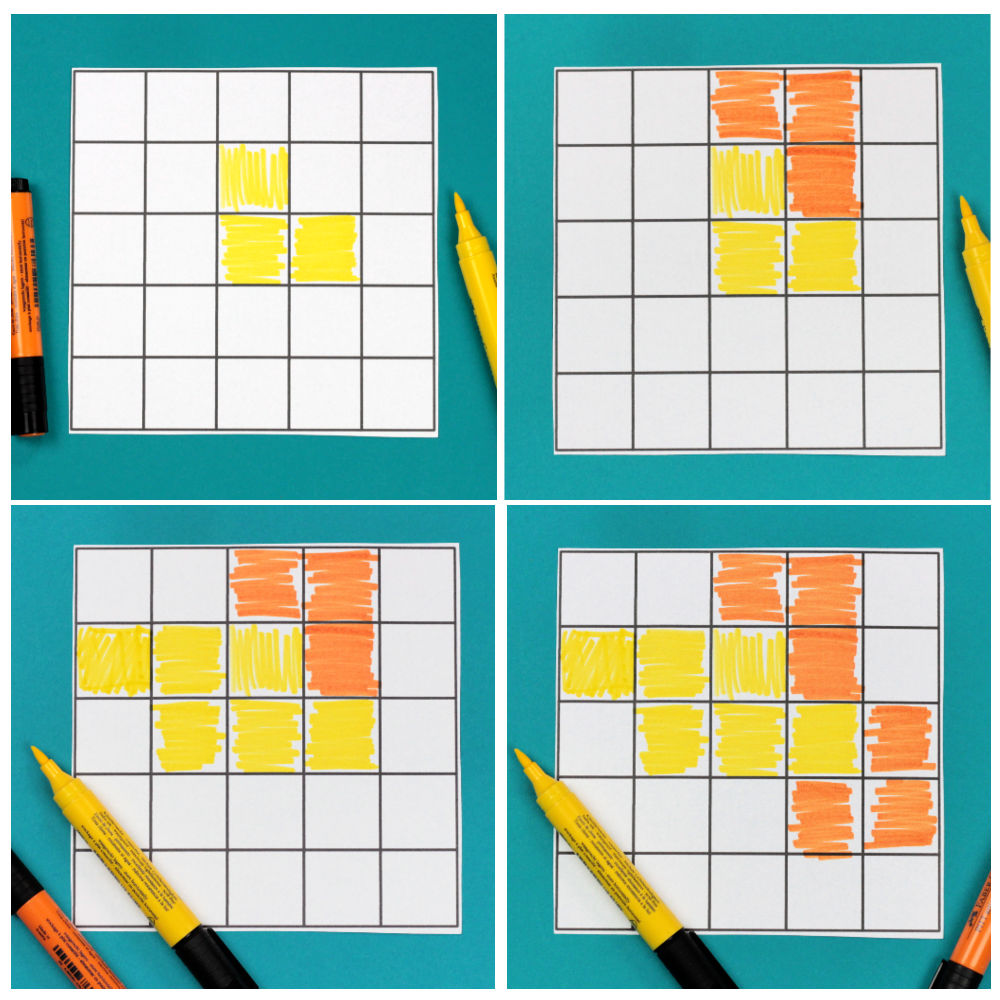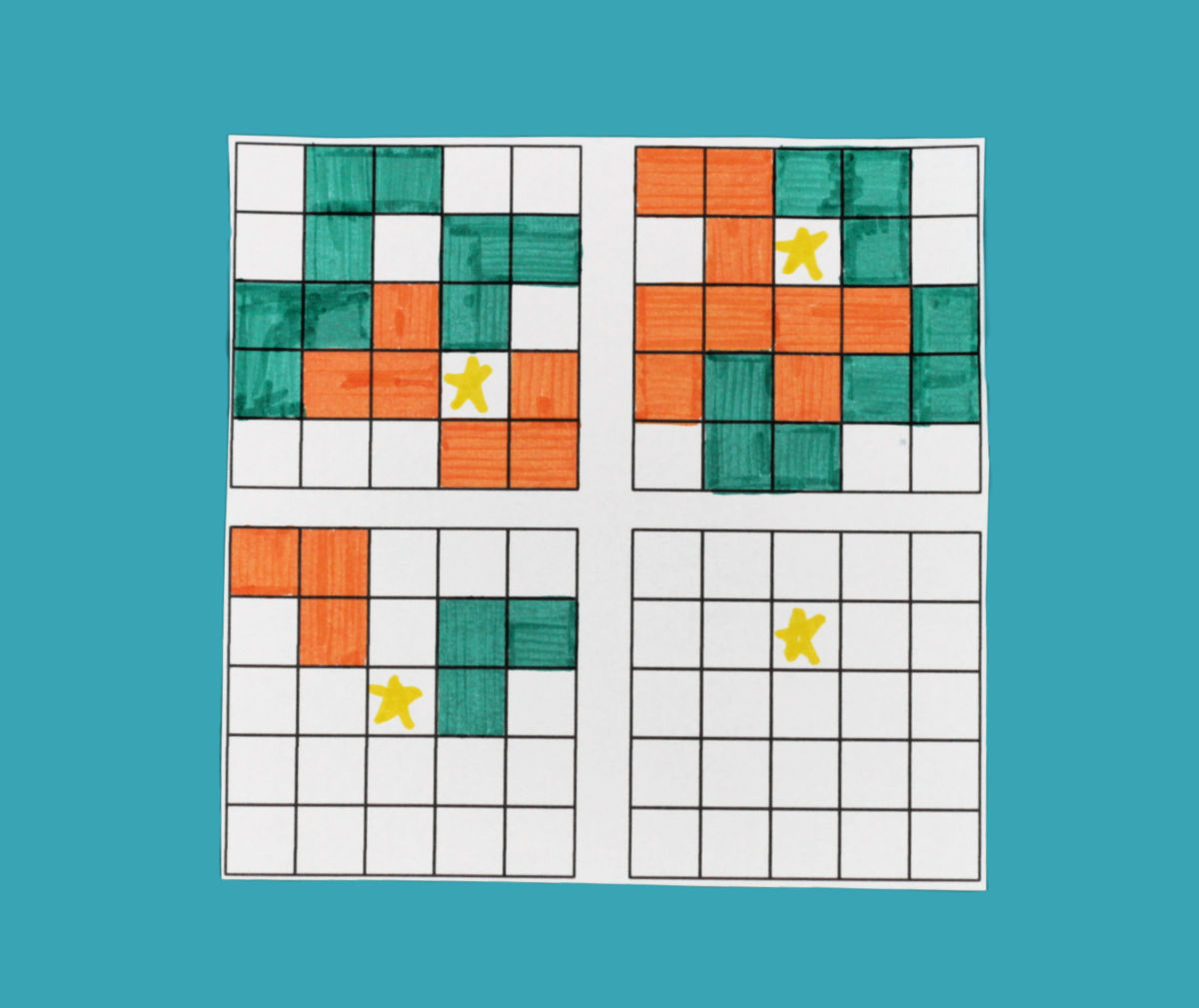What is a fun, quick math game for kids that they can squeeze into any free moment? Trominoes! Trominoes is an easy pen and paper game that exercises visual perception and spatial reasoning skills, and teaches kids how to think ahead and strategize.

Trominoes may remind you of tetris, and indeed, the concept is similar. We have adapted the traditional single-player tromino puzzle into a two player game for kids. The game is a fun brain teaser with a mathematical puzzle-y twist. And yet, even if you don't care two hoots about the math concepts involved, it is an excellent boredom buster!
What you need:
- 2 markers in different colors
- Game board grid. 5x5 or 8x8 are good grids to start with. Draw your own, or print out ours, which has one large 5x5 grid, one 8x8 grid and 4 small 5x5 grids (fill out the form below to get the pdf)
- 2 enthusiastic players
Read the following instructions, and then scroll down for some great variations and a single-player puzzle version to extend the learning and fun!
Tromino instructions
- Objective
The goal is to be the last player to successfully place a tromino on the game board.
- Tromino definition
A tromino is a shape composed of three squares, joined along the edges. You can play with either only L-shaped trominoes, or the L- and l-shaped trominoes.
- Game Play Begins
Decide who goes first and if you will use only L-shapes or both L- and l-shapes
Alternating turns, players color the appropriate grid blocks to create a tromino.
See the photo example of the first four moves of a match in which players use only L-shapes. - Winning
The objective of the game is to be the last player able to put a tromino on the board, thus blocking your opponent from playing. In the below example, yellow triumphs because there is no room left for another orange L-shape.
- Alternate rules
Before beginning game play, place a star onto any empty square on the grid. That square can no longer be used. Four different game boards options are show below (this is page three of our printable game board). The top two match-ups are completed games.
Variations and Questions
The following ideas are for kids who would like to further explore some of the mathematical concepts of the tromino puzzle or game strategies.
Vary the grid layout. Does the grid need to be square? What happens if you have an uneven number of rows and columns, such as 5x4 or 8x9?
Does it help to go first?
Where is the best place to put your first tromino? Why?
How does using only one or both tromino shapes change the game?
Change the rules so that the player who places the final tromino loses. If the tromino placed last is the loser, how does that change your strategy?
Single Player Tromino Puzzle
Here's how to use the game board grid as a problem-solving exercise for a single player. The goal is the completely fill the grid with L-shaped trominoes. Can it be done?
How many L-shapes can you place on the grid? Using a different color marker for each tromino so you can easily track your work. What if you vary the size of the "L" from 2x1 to 3x1 or 3x2? What if you vary the size of the grid?
I bet your kids can do a much better job than this:

More mathematical puzzlers and games:







TechyKids Canada says
This seems like a really fun math activity for kids. It's perfect for them to develop an interest towards the subject and to cement their knowledge. Thanks for sharing this activity and explaining it so well!
Chantelle Taylor says
Thanks! I'm using this in the classroom the last week of school. My fifth graders will love it.
Wendy Walker says
The puzzle can only be complete if you have a "star" spot. If all pieces are 3-squares, then the board must be a multiple of 3 in order to complete it. A 5x5 board is 25 squares. Make a star box for 24 useable spaces, which is divisible by 3.